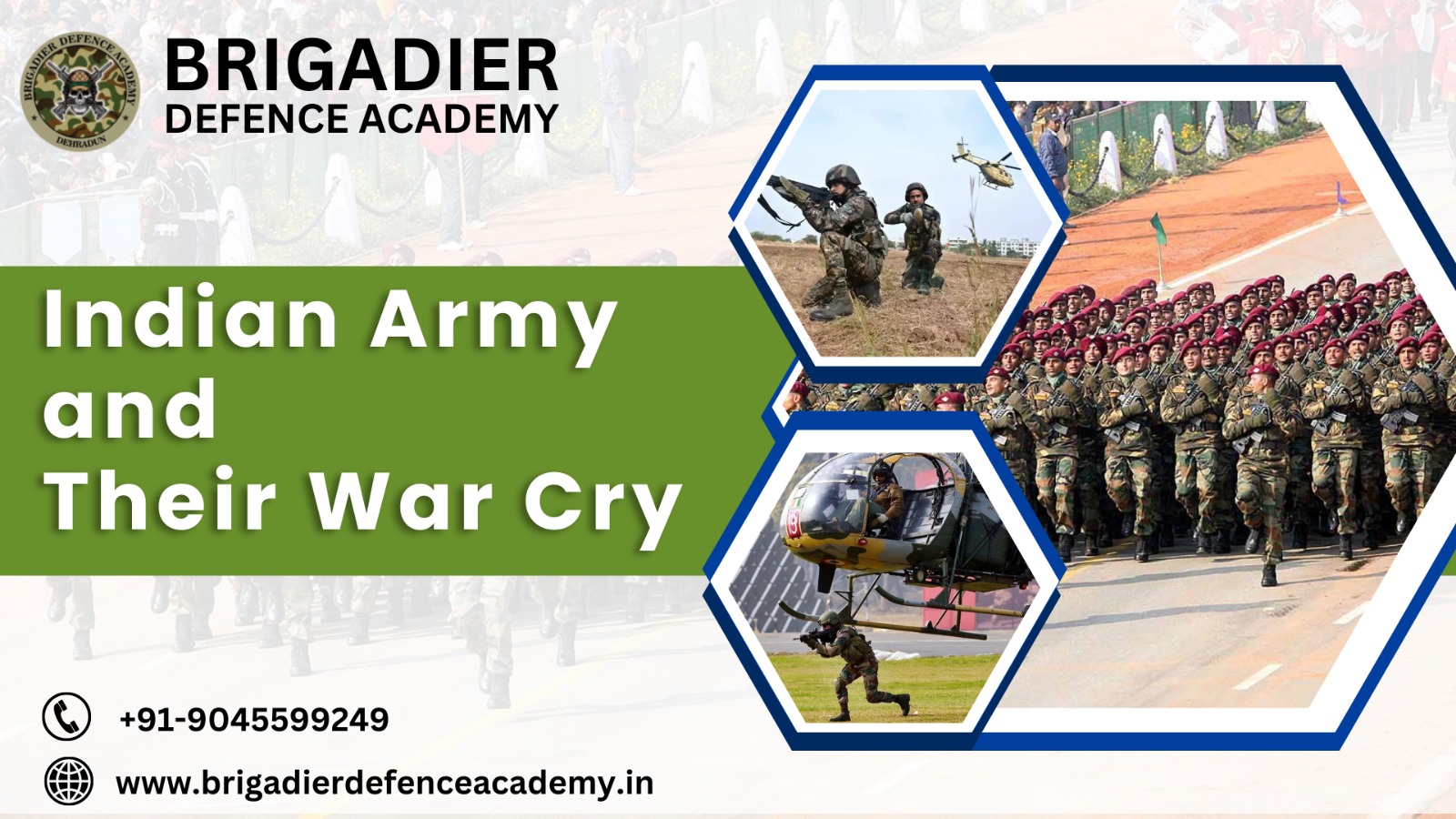Indian Army Regiments and Their War Cry
In the vast tapestry of India’s military history, the Indian Army stands as a bastion of courage, resilience, and unwavering dedication. Central to the ethos of the Indian Army are its war cries, resonating chants that encapsulate the spirit of valor and unity among soldiers. These war cries are not mere words but potent symbols that instill a sense of belonging, pride, and determination within the ranks. In this article, we delve into the significance of Indian Army war cries, exploring their origins, diversity, and enduring relevance in the modern era.
Origins of Indian Army War Cries:
The tradition of war cries in the Indian Army finds its roots deep in history, tracing back to ancient battlefields where warriors invoked the names of gods, heroes, and ancestral spirits to embolden their resolve. Over the centuries, these chants evolved, embodying the cultural diversity and martial traditions of India’s myriad regions and communities.
One of the most renowned war cries is “Bharat Mata Ki Jai,” which translates to “Victory to Mother India.” This iconic chant reverberates with patriotism and a fierce determination to defend the nation’s honor. Similarly, “Jai Hind,” meaning “Long Live India,” serves as a rallying cry uniting soldiers under the banner of national pride and unity.
Diversity of War Cries:
India’s rich cultural mosaic is reflected in the diverse array of war cries adopted by different regiments and units of the Indian Army. Each war cry carries with it a unique history and symbolism, often rooted in the traditions and folklore of the region from which the regiment hails.
For instance, the “Garud Ka Hunar, Sher Ka Dum” chant of the Garhwal Rifles invokes the prowess of the mythical Garuda bird and the strength of the lion, symbolizing agility and courage in battle. Similarly, the “Bajrang Bali Ki Jai” cry of the Grenadiers pays homage to Lord Hanuman, the epitome of strength and devotion in Hindu mythology.
The “Jo Bole So Nihal, Sat Sri Akal” war cry of the Sikh Regiment resonates with the spirit of martyrdom and fearlessness, drawing inspiration from the Sikh warrior tradition exemplified by the valiant deeds of Guru Gobind Singh and his Khalsa warriors.
In addition to these, there are countless other war cries representing the linguistic, cultural, and ethnic diversity of India, ranging from the “Durga Mata Ki Jai” of the Assam Regiment to the “Sarvada Shaktishali” of the Jat Regiment.
Significance in Combat:
War cries hold profound significance in the context of combat operations, serving as morale boosters and psychological tools to intimidate adversaries. The rhythmic chanting of war cries before battle not only fosters a sense of camaraderie among soldiers but also instills fear and uncertainty in the enemy ranks.
Moreover, war cries act as rallying points during moments of adversity, inspiring troops to persevere in the face of adversity and overcome seemingly insurmountable odds. The sheer intensity and fervor with which soldiers chant their war cries reflect their unwavering commitment to the mission and the collective defense of the nation.
Evolution in the Modern Era:
While the essence of Indian Army war cries remains unchanged, their presentation and context have evolved in response to the changing nature of warfare and the demands of contemporary military operations. In addition to traditional chants, modern regiments have adopted new slogans and catchphrases that resonate with the aspirations and ethos of the younger generation of soldiers.
Furthermore, the advent of technology and social media has enabled the dissemination of war cries to a global audience, amplifying their impact and fostering a sense of pride and identity among Indians both at home and abroad. Platforms like YouTube and Instagram are replete with videos showcasing soldiers chanting their war cries with passion and fervor, garnering admiration and respect from civilians and fellow servicemen alike.
Conclusion:
Indian Army war cries are not just verbal expressions of bravado but potent symbols of national pride, unity, and resilience. Rooted in tradition yet adaptable to the demands of the modern battlefield, these chants embody the spirit of sacrifice, valor, and brotherhood that defines the Indian Army. As the guardians of the nation’s security, Indian soldiers continue to invoke these age-old war cries, standing as beacons of courage and fortitude in the face of adversity. Truly, the echoes of their chants resonate not only across the battlefield but also in the hearts and minds of every Indian, inspiring generations to come.
Inscribed in the annals of history, the war cries of the Indian Army stand as a testament to the indomitable spirit of a nation united in its quest for peace, prosperity, and freedom.
Through their resounding chants, Indian soldiers march forward, embodying the timeless adage: “Vijayi Bhava” – May Victory Be Yours!







